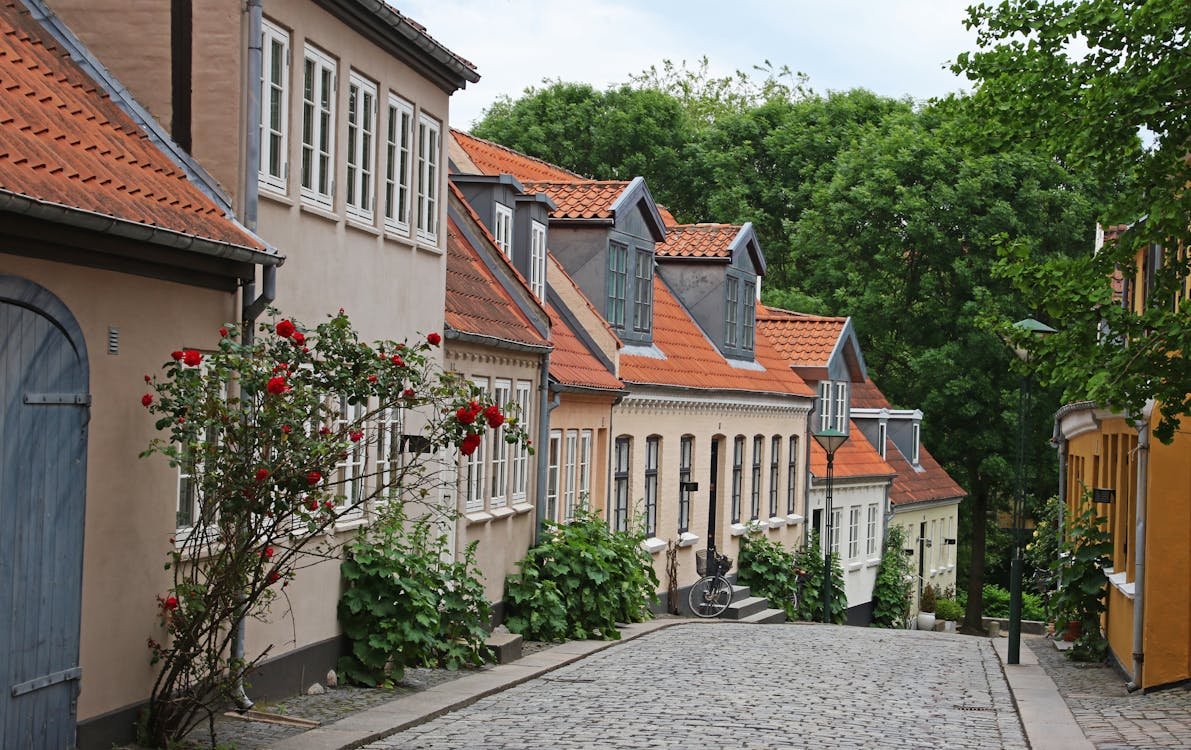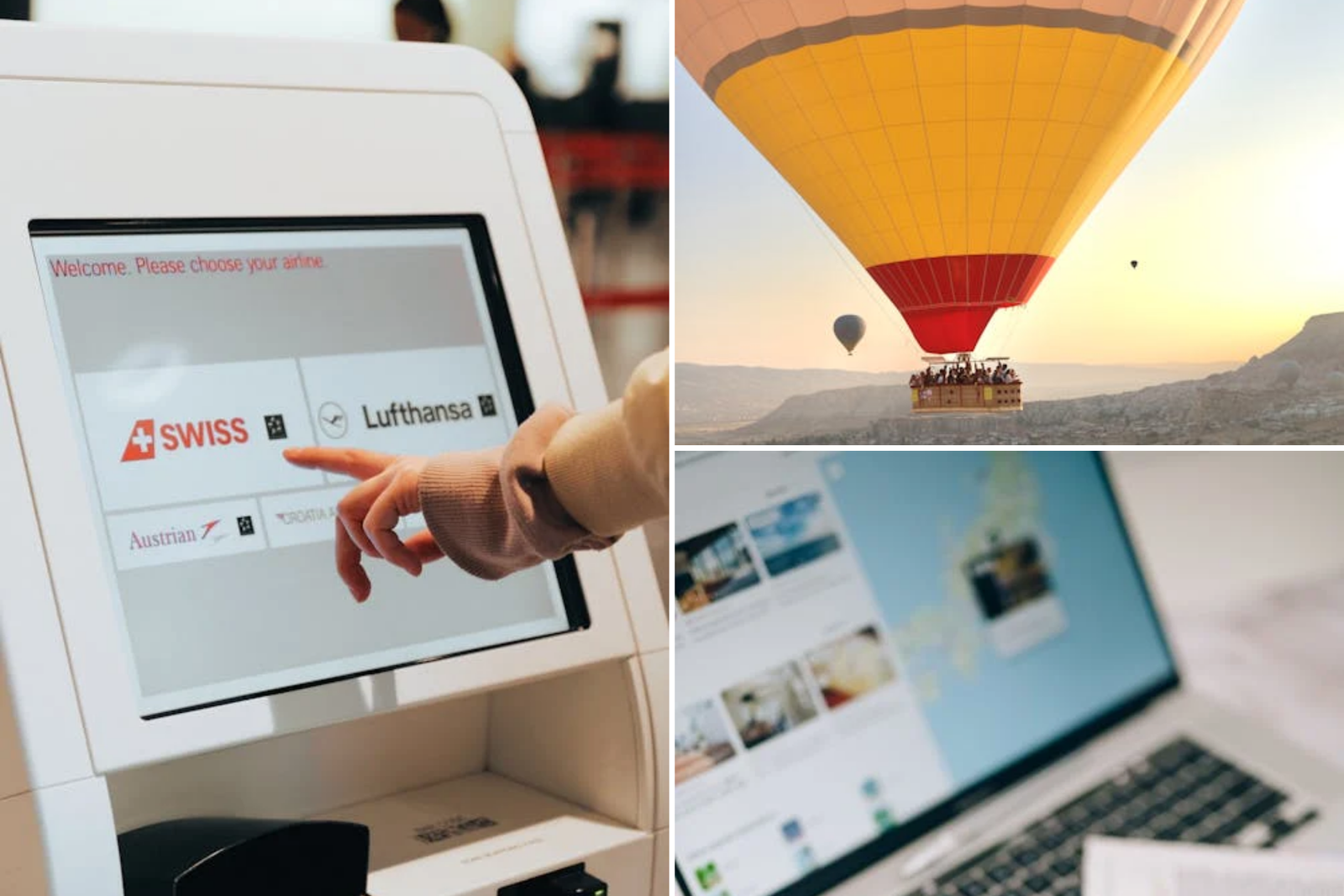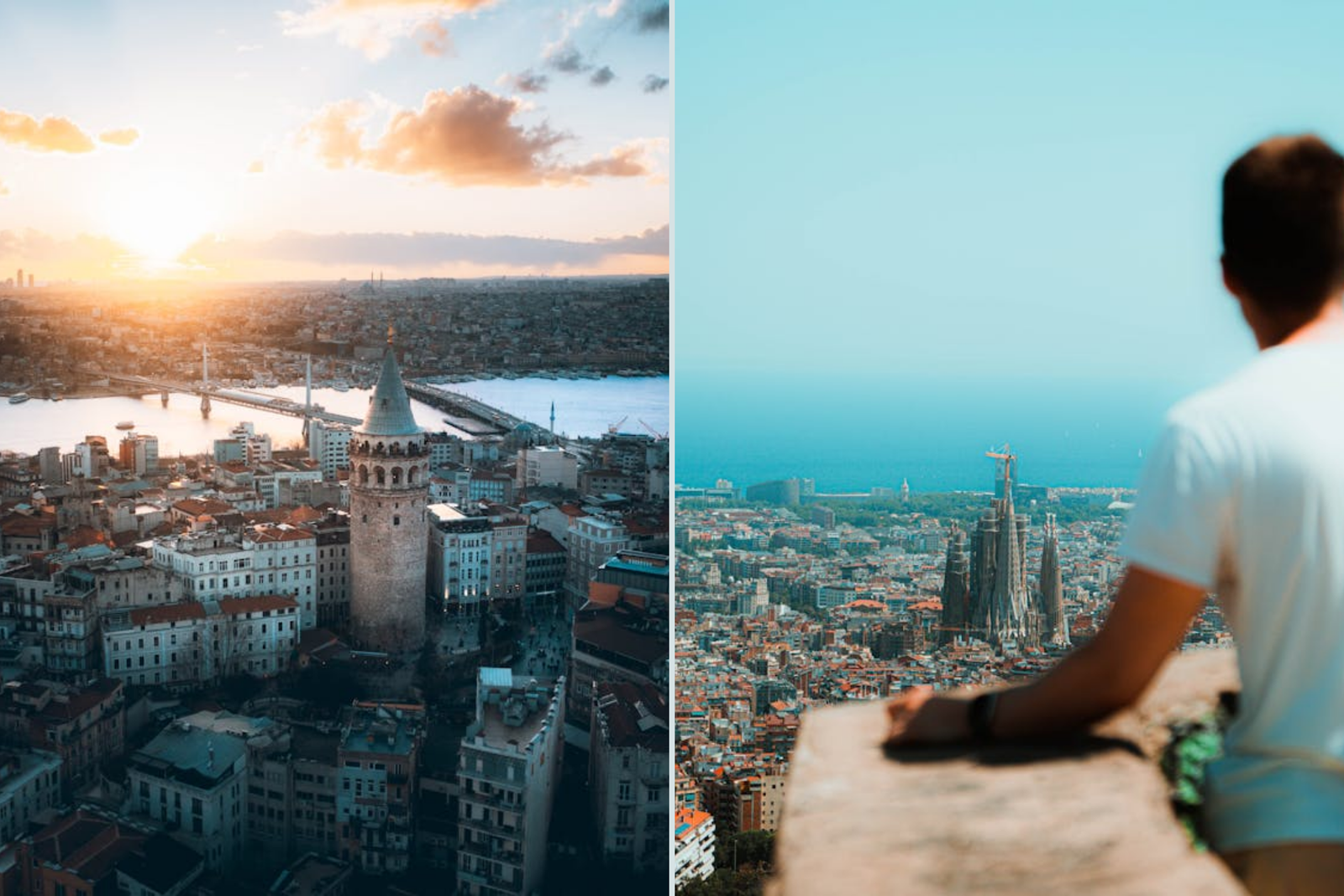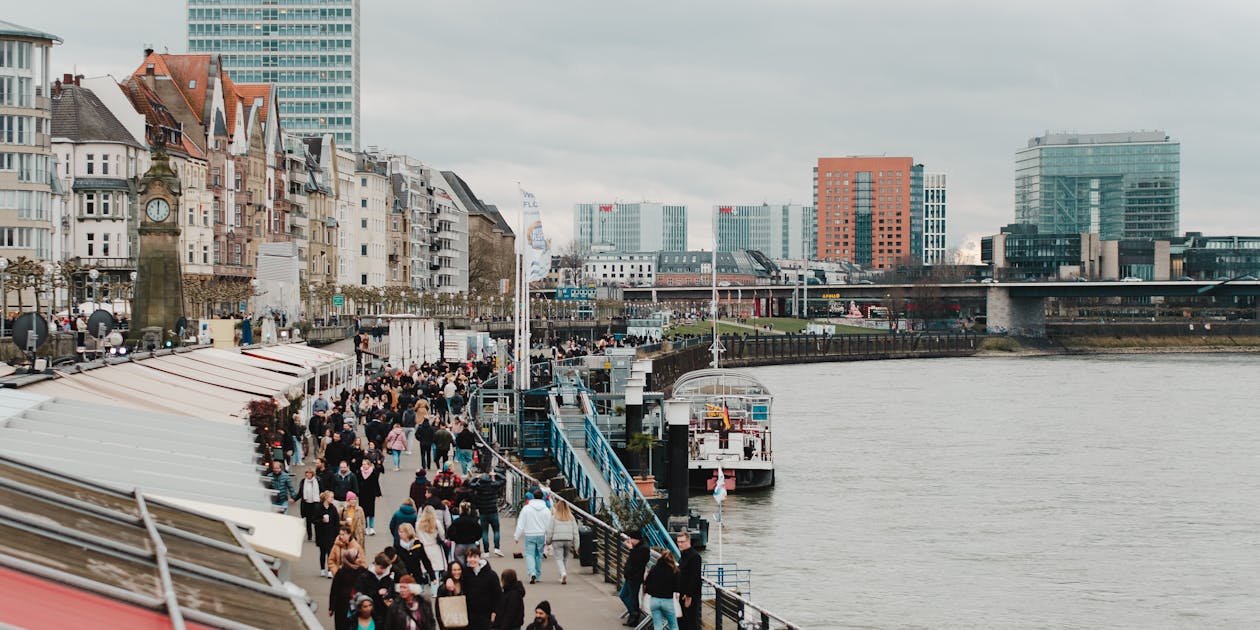Planning your first solo trip to Europe? You’re not alone — Europe has long captured the hearts of travelers with its rich history, vibrant cultures, and breathtaking landscapes. But the idea of exploring it alone, on a budget? Equal parts exciting… and intimidating.

Image: A solo traveler enjoying a European cityscape.
When you travel solo, you learn to trust yourself and the universe
Gloria Steinem
As someone who’s wandered Europe solo — from navigating train stations in Italy to stretching my euros across Eastern Europe — I totally get the thrill and the challenge of doing it affordably.
That’s exactly why I created this guide: to help you plan your first solo trip to Europe with confidence, clarity, and smart budgeting strategies. Whether you’re a digital nomad hunting down affordable hidden gems or a first-timer figuring out how to stretch your savings across borders, this guide is your go-to playbook.
We’ll cover everything from budget flights and solo-friendly cities to where to stay, what to eat, and how to stay connected with a travel eSIM — all so you can focus on the adventure, not the stress.
I. Planning Your First Solo Travel Europe Budget: Essential Financial Framework

Image: Person planning budget with smartphone, notebook, and Europe travel guides
Before dreaming of croissants in Paris or canal tours in Amsterdam, there’s one key thing to lock in: your budget. Don’t think of it as limiting — think of it as freedom to enjoy your solo adventure without financial stress.
Here’s how to build a smart spending plan that keeps your trip on track (and on budget).
Set a Realistic Travel Budget (No Stress, Just Smart Choices)
To kick off your first solo trip to Europe, figure out your maximum total spend — the real number you’re comfortable with for the entire journey. From there, break it into categories like:
- Flights – Usually your biggest upfront cost
- Accommodation – Hostels, budget hotels, guesthouses, or Airbnbs
- Transportation in Europe – Think trains, buses, and budget airlines
- Food & Drinks – Local eats, groceries, and the occasional splurge
- Activities & Attractions – Museums, tours, hikes, cooking classes
- Visa Fees – Check if you need one, and plan ahead
- Travel Insurance – A must-have for solo travelers
- Emergency Fund – Set aside 10–15% of your total just in case
How to Divide Your Travel Budget
Here’s a simple breakdown to help you plan your budget-friendly solo Europe itinerary:
| Category | Suggested % of Total Budget |
|---|---|
| Transportation | 30–35% (flights + local travel) |
| Accommodation | 25–30% |
| Food & Drinks | 15–20% |
| Activities | 10–15% |
| Misc/Emergency | 10% |
Using apps like TrabeePocket or Splitwise can help you track everything in real-time — especially helpful if you’re hopping between multiple affordable European destinations.
💸 Budget tip: Compare eSIM vs physical SIM options before you fly — prepaid eSIMs save you big time on roaming while backpacking Europe.
II. Choosing Solo-Friendly and Budget-Conscious European Destinations

Image: Map of Europe with budget-friendly destinations highlighted
Not all European cities are created equal — especially when it comes to cost. Picking the right places can make or break your first solo trip to Europe, both financially and emotionally. The good news? You’ve got tons of affordable, solo-traveler-friendly gems to choose from.
Let’s explore where your euros can stretch the furthest — without sacrificing unforgettable experiences.
Eastern Europe: Big Value, Low Cost
Eastern Europe is a budget traveler’s dream. It’s packed with culture, history, amazing food — and best of all, it’s significantly cheaper than many Western countries.
Here are a few top picks for solo travelers on a budget:
- 🇭🇺 Budapest, Hungary – Famous for its thermal baths, gothic beauty, and wallet-friendly eats
- 🇨🇿 Prague, Czech Republic – Storybook charm and great hostel options, all at solid prices
- 🇵🇱 Krakow, Poland – Historic, walkable, and incredibly affordable for both accommodation and food
- 🇧🇬 Sofia, Bulgaria – One of the cheapest capitals in Europe, with beautiful churches and mountain views
- 🇸🇰 Bratislava, Slovakia – Cozy, colorful, and just an hour from Vienna — at half the price
Western Europe Can Be Done on a Budget
Don’t count Western Europe out — with the right strategy, you can still explore its highlights without blowing your budget.
Try these underrated, budget-conscious cities:
- 🇵🇹 Porto, Portugal – Stunning river views, great wine, and more affordable than Lisbon
- 🇮🇹 Bologna, Italy – Foodie heaven without the Florence price tag
- 🇪🇸 Seville, Spain – Flamenco, history, and sunshine for less than Barcelona
- 🇫🇷 Lyon, France – The culinary capital of France, with better value than Paris
- 🇩🇪 Hamburg, Germany – Trendy, artsy, and cheaper than Munich or Berlin
💡 Pro Tip: Budget airlines and trains make it easy to combine one or two Western cities with an Eastern Europe base.
Research Local Costs Before Locking in Your Itinerary
Before committing to any destination, take a few minutes to look up:
- Average cost of a hostel or guesthouse per night
- Public transportation passes (daily/weekly)
- Meal prices at local cafés vs. restaurants
- Entrance fees to museums, tours, or experiences
This helps you build a realistic day-by-day budget — and avoid the shock of €10 cappuccinos.
✨ Choosing the right destinations means more than saving money — it’s about giving yourself the freedom to fully experience Europe your way.
III. Timing is Everything: Leveraging Shoulder and Off-Seasons

Image: Peaceful European street with few tourists during shoulder season
When you go can be just as important as where you go — especially when planning your first solo trip to Europe on a budget. Travel during the right season, and you’ll save big on flights, accommodation, and even attractions — all while avoiding overwhelming crowds.
Let’s break it down:
Shoulder Season = Smart Season
If you’re aiming for great weather + fewer tourists + lower prices, the shoulder season is your best friend. Think April to May or September to October — right before and after peak summer.
Why it’s ideal for solo travelers:
- 20–30% cheaper accommodation than in peak summer months
- Shorter lines at popular attractions (hello, Eiffel Tower without the chaos!)
- Perfect weather for walking, hiking, or café hopping
- More authentic vibes — locals aren’t burned out from tourist overload
Off-Season = Maximum Savings
Looking for the most budget-friendly time for your Europe solo adventure? Consider traveling from November to March (excluding major holidays like Christmas and New Year’s).
Here’s what you can expect:
- Up to 50% off hotel and hostel rates
- Super cheap flights — especially on weekdays
- Winter markets in cities like Prague, Vienna, and Cologne
- Cozy cultural experiences — museums, concerts, and local cafés come alive in colder months
Bonus: Winter is a great time to experience Europe from a totally different angle — festive, magical, and surprisingly affordable.
Be Flexible, Save More
Flexibility = more freedom and more deals. If your schedule is open, you can grab the best prices by:
- Flying mid-week (Tuesdays & Wednesdays are often 10–15% cheaper)
- Avoiding peak holidays and festivals (unless they’re a main reason for your trip)
- Setting price alerts on sites like Skyscanner, Google Flights, or Hopper
Even shifting your dates by a few days can unlock major savings — money you can use for extra experiences instead!
✨ Traveling smart isn’t about cutting corners — it’s about unlocking more freedom, more adventure, and more authentic moments, without overspending.
IV. Mastering Flight Booking Strategies for Budget Solo Travel

Image: Person booking flights online with multiple comparison sites open
Let’s be honest: flights will likely be your biggest upfront cost when planning your first solo trip to Europe. But with the right tools and a few clever tricks, you can save hundreds — and spend that cash on experiences instead. 💸
Here’s how to fly smarter, not spend harder.
Use the Right Flight Search Tools
These platforms are solo travel gold — especially if your plans are flexible:
- Skyscanner – Use the “Everywhere” search to find the cheapest cities to fly into
- Google Flights – Their explore map + flexible date tool = serious savings
- Kiwi.com – Mixes airlines that traditional searches won’t pair together
- Secret Flying – Snag flash deals and error fares (yes, they’re real!)
💡 Budget tip: Set price alerts 2–3 months before you plan to fly. Let the deals come to you!
Budget Airlines Within Europe
Once you’re in Europe, hopping between cities is surprisingly cheap — if you know the right airlines to fly with.
Here are a few go-to low-cost carriers:
| Airline | Best For |
|---|---|
| Ryanair | Ultra-low fares, huge route network |
| EasyJet | Budget-friendly and flies to better-located airports |
| Wizz Air | Great for Eastern Europe and lesser-known cities |
| Vueling | Strong in Spain, France, and Mediterranean hubs |
Just remember: read the fine print! These airlines charge for bags, seat selection, even printing your ticket in some cases.
Smart Booking Tactics for First-Time Solo Flyers
Timing your bookings can make a huge difference — here’s the sweet spot:
- Book international flights 3–4 months in advance
- Internal Europe flights: Book 6–8 weeks out for the best deals
- Open-jaw tickets (arrive in one city, depart from another) often cost less and save time
- Use a VPN when searching — sometimes prices vary based on location!
Bonus: Sign up for airline newsletters or follow flight deal accounts — sometimes the best offers don’t show up on search engines.
✨ Every euro saved on flights = more street food, more museum passes, more memories.
V. Smart Accommodation Choices for Solo Travelers on a Budget

Image: Cozy hostel common area with solo travelers socializing
Accommodation will likely be your second biggest expense after flights — but the good news? Europe has tons of affordable, solo-friendly options that suit every vibe, from ultra-social to peaceful and private.
Whether you’re looking to connect with others or recharge solo, here’s how to find the perfect place to stay during your first solo trip to Europe.
Hostels: A Solo Traveler’s Budget-Friendly Home Base
If you’re open to dorm-style living, hostels are your best friend when traveling Europe on a budget. They’re affordable, fun, and full of opportunities to meet like-minded travelers.
Why they’re great for solo adventurers:
- Dorm beds from €15–30/night, depending on the city
- Built-in social scene: common areas, group dinners, pub crawls
- Free walking tours, local tips from staff, and sometimes free breakfast
- Many have kitchen access = save money by cooking simple meals
Use Hostelworld or Booking.com to compare hostels with high ratings, social vibes, and central locations — perfect for a Europe on a shoestring experience.
Private Yet Affordable Accommodations
Want more privacy but still need to stick to your budget? No problem — you’ve got options:
- Airbnb private rooms – Often cheaper than hotels and give you a more local experience
- Budget hotels – Independent or family-run spots can offer better value than big chains
- Guesthouses & pensions – Charming, often family-operated, with personalized tips and cozy vibes
- University dorms – Available during summer holidays in many cities (cheap + centrally located)
These are ideal if you need downtime between sightseeing — or just want your own bathroom once in a while
Location Tips to Save Time and Money
Where you stay affects more than your nightly rate — it impacts your whole experience. Here’s how to choose wisely:
- Near public transport – Saves money and makes exploring easier
- Close to grocery stores – Great for preparing quick meals or snacks
- Walkable to attractions – Reduces daily transportation costs
- In a safe, well-reviewed neighborhood – Always a must for solo travelers
✨ The right accommodation isn’t just about price — it’s about feeling safe, supported, and in control of your solo journey.
VI. Transportation Tactics for Europe on a Shoestring

Image: Solo traveler with backpack boarding a European train
Getting around Europe doesn’t have to be expensive — especially when you know the smartest ways to move. Whether you’re zipping between cities or navigating metro systems, these transportation tips will help you explore more while spending less on your first solo trip to Europe.
City Travel: Make the Most of Local Transport
Europe’s cities are known for their excellent public transportation — and it’s one of the best ways for solo travelers to save money while exploring.
Here’s how to ride smart:
- Buy multi-day passes – These often offer unlimited travel on buses, metros, and trams
- Look into city cards – Many include public transport plus discounted entry to museums and attractions
- Download local transit apps – Apps like Citymapper or Moovit help you plan routes in real time
- Walk when you can – Many historic centers are super walkable (and scenic!)
💡 Pro tip: Walking gives you a better feel for the city — and leads to great spontaneous discoveries.
Train Travel: Scenic, Comfortable, and Budget-Friendly
There’s something magical about solo train journeys through Europe — and with a little planning, they’re very affordable too.
- Eurail Pass – Worth it if you’re visiting multiple countries over a few weeks
- Regional trains – Slower, cheaper, and more scenic than high-speed rail
- Book in advance – Many countries (like France, Italy, and Germany) offer early-bird discounts
- Overnight trains – Save on a night’s accommodation while waking up in a new city
Budget Buses: Maximum Value, Minimum Spend
If your goal is cheap solo travel in Europe, long-distance buses are a game-changer. They’re slower than trains but often way cheaper — and surprisingly comfy.
Top picks for budget travelers:
- FlixBus – Huge network across Europe, with fares starting as low as €5
- RegioJet – Excellent for Central & Eastern Europe (hello, Krakow to Prague!)
- Megabus – Ideal for UK routes and parts of Western Europe
- BlaBlaCar – Ridesharing platform where you split fuel costs with locals — great for off-the-beaten-path trips
✨ From scenic train rides to €5 bus fares, smart transport choices help you explore more — without draining your budget.
VII. Food Strategies for Solo Travelers on a Budget

Image: Solo traveler enjoying affordable local food at European market
One of the joys of your first solo trip to Europe? The food. One of the challenges? Not blowing your budget on fancy meals every day. The good news: you can absolutely eat well without spending a fortune — and still enjoy the heck out of local flavors.
Here’s how to balance your belly and your bank account.
Self-Catering: The Budget Traveler’s Secret Sauce
Cooking your own meals doesn’t mean missing out — it’s actually a great way to experience local life, especially if you’re staying in a hostel or Airbnb.
Here’s how to make self-catering work for you:
- Shop at discount supermarkets like Lidl, Aldi, or Carrefour
- Hit local farmers’ markets for fresh, affordable produce (and great people-watching)
- Prep simple breakfasts and dinners — save your eating-out money for lunches or unique dishes
- Pack your own sandwiches or salads for sightseeing days
💡 Pro Tip: Many hostels offer free food shelves — pasta, oil, spices left by past travelers!
Affordable, Authentic Dining You’ll Love
You don’t have to splurge to eat like a local — you just need to know when and where to go.
- Lunch specials (menu del día) – Many restaurants offer fixed menus at discounted prices
- Eat near universities – Student-heavy areas = tasty meals for cheap
- Food halls & markets – Try multiple local dishes without committing to full plates
- Bakeries & delis – Grab sandwiches, pastries, and snacks for on-the-go feasting
Ordering tip: Learn a few key food words in the local language — it makes the experience more fun (and helps avoid mystery meat 😅).
Street Food = Gourmet on a Backpacker Budget
Every country has its must-try street food — and solo travelers get the freedom to taste it all, no judgment, no sharing required
Here are a few tasty, wallet-friendly bites across Europe:
| Country | Street Food Must-Try |
|---|---|
| 🇩🇪 Germany | Currywurst, Döner kebab |
| 🇭🇺 Hungary | Lángos – fried dough heaven |
| 🇵🇱 Poland | Zapiekanka – cheesy baguette pizza |
| 🇨🇿 Czechia | Trdelník – sweet, cinnamon-y pastry |
| 🇮🇹 Italy | Arancini, Pizza al taglio – affordable and delicious |
✨ Food is one of the best ways to connect with a culture — and solo travelers have the perfect excuse to eat exactly what they want, when they want.
VIII. Free and Low-Cost Experiences Across Europe

Image: Solo traveler enjoying panoramic city views from free viewpoint
Who says you need a big budget to experience the best of Europe? During your first solo trip to Europe, some of the most memorable moments won’t cost you a thing. From free walking tours to local festivals, here’s how to enjoy rich cultural experiences on a shoestring.
Free Walking Tours: A Solo Traveler’s Secret Weapon
Nearly every major European city offers tip-based walking tours — and they’re absolute gold for solo travelers.
Why they’re amazing:
- Get your bearings fast in a new city
- Learn local history, quirky facts, and cultural context
- Meet other solo travelers (hello, new hostel buddy!)
- Pay what you feel — typically €5–10 in tips is standard
Search platforms like GuruWalk or FreeTour.com to find highly rated guides and schedules.
Cultural Gems That Won’t Break the Bank
Europe is a treasure chest of art, history, and architecture — and much of it is accessible without high costs.
How to experience the culture on a budget:
- Free museum days – Many cities offer free entry on the first Sunday of each month
- Student discounts – Bring a student ID (even if it’s expired — sometimes it still works!)
- City passes – Great value if you plan to visit several attractions in one city
- Churches and cathedrals – Often free to enter and absolutely stunning inside
Free Nature & Urban Exploration
Some of Europe’s most beautiful spots aren’t behind a ticket gate — they’re all around you.
Here’s what to look out for:
- Hiking trails near cities – Think the Cinque Terre, Montjuïc in Barcelona, or trails near Prague
- Public parks & gardens – Perfect for a picnic, people-watching, or just relaxing
- Self-guided walking routes – Architecture lovers, this one’s for you (hello, Gaudí!)
- Local festivals and public events – Free concerts, street parades, and night markets pop up often
💡 Pro tip: Check city tourism websites or hostel bulletin boards for events happening while you’re in town.
✨ You don’t need to spend big to feel connected, inspired, or wowed. Some of the best travel memories come from the simplest (and cheapest) moments.
IX. Staying Connected: Essential Tech for Solo Budget Travelers

Image: Solo traveler using smartphone for navigation in European city
When you’re navigating a new continent solo, staying connected isn’t optional — it’s essential. From finding your hostel to catching your next bus, reliable internet and the right apps can save you money, time, and stress during your first solo trip to Europe..
Affordable Ways to Stay Online
Skip the roaming fees — they’ll wreck your budget faster than a €6 coffee in central Paris. Here’s how to stay connected without overspending:
- GOHUB eSIM – Instant activation, no physical SIM needed, and works across 100+ countries, including all of Europe. Super convenient for hopping between borders.
- Local SIM cards – Available at airports or phone shops, but often require ID and setup time
- Free Wi-Fi hotspots – Common in cafés, libraries, hostels, and public plazas — just be cautious with sensitive info on public networks
💡 Pro Tip: Install a VPN app if you’ll be using public Wi-Fi often.

Image: Screenshot of the GoHub eSIM webpage, highlighting the destination input field with “Destination” selected, illustrating how users can easily search for eSIM data plans.
Must-Have Apps for Solo Travelers on a Budget
Here’s your solo travel toolkit — these apps will make your journey smoother and more affordable:
| App | What It Does |
|---|---|
| Google Maps / Maps.me | Navigate offline and find nearby places |
| Google Translate | Communicate across languages — download offline packs |
| XE Currency | Instantly convert prices to your home currency |
| Hostelworld / Booking.com | Book last-minute stays with honest reviews |
| FlixBus / BlaBlaCar | Find cheap intercity buses and rideshares across Europe |
✨ Bonus: Download your travel docs (insurance, passport scan, tickets) to cloud storage or your phone for offline access — solo safety 101!
X. Safety Considerations for Solo Budget Travelers

Image: Solo traveler with secure anti-theft backpack in crowded area
Traveling solo doesn’t mean traveling scared — and traveling on a budget doesn’t mean sacrificing safety. With a little awareness and the right tools, you can feel totally confident and secure during your first solo trip to Europe.
Practical Safety Tips for Solo Explorers
These simple habits go a long way in keeping you safe on the road:
- Research neighborhoods before booking a hostel or Airbnb
- Share your itinerary with a trusted friend or family member
- Keep digital copies of your passport, visa, insurance, and bookings
- Stay alert in crowded places like train stations, metro lines, or touristy areas
- Trust your instincts — if something feels off, walk away or ask for help
💬 Solo doesn’t mean vulnerable — it means prepared, empowered, and aware.
Smart Safety Investments That Are 100% Worth It
You don’t need to spend much to feel a lot safer. These budget-friendly items can give you serious peace of mind:
- Travel insurance – Get coverage for medical emergencies, delays, and theft
- Anti-theft backpack or money belt – Keeps your valuables close and protected
- Reliable power bank – Because a dead phone = no GPS, no contact, no bueno
- Small padlock – Essential for hostel lockers and luggage security
🧳 Bonus tip: If you use a digital eSIM (like GOHUB 😉), you won’t need to carry extra SIM cards — fewer things to lose, more peace of mind.
Balancing Planning with Spontaneity

Image: Solo traveler enjoying unexpected discovery in European side street
Yes, planning helps your budget. But some of the most magical moments during your solo Europe backpacking journey? They come from saying “yes” to the unexpected.
Here’s how to stay flexible and financially smart:
- Leave buffer days between big cities — you might fall in love with a place and want to linger
- Research multiple accommodations, but only pre-book your first few nights
- Keep a flexible wish list, not a rigid hour-by-hour plan
- Budget for one or two splurges — like a flamenco show in Seville or a surprise gondola ride in Venice
✨ Solo travel isn’t about sticking to a script — it’s about writing your own.
XI. Conclusion: Your Solo European Adventure Awaits
With the right mindset, smart planning, and a few budget hacks in your pocket, exploring Europe solo doesn’t have to be expensive — it just has to be intentional.
Your first solo trip to Europe can be everything you’ve dreamed of: empowering, exciting, affordable, and packed with unforgettable experiences. By choosing budget-friendly destinations, mastering public transport, and embracing local culture (and food!), you’ll make the most of every euro — without sacrificing the magic.
And remember: the real souvenirs aren’t just postcards or photos. They’re the confidence you build, the people you meet, and the stories you’ll tell long after you’ve unpacked your bag.
📶 Stay Connected with GOHUB
From Paris to Prague and everywhere in between, GOHUB’s regional eSIM for Europe keeps you online, informed, and in control. No contracts. No roaming surprises. Instant delivery.
Perfect for solo travelers who want freedom without the fuss.
👉 Get Your Travel eSIM for Europe Now
✨ Europe is waiting. Your solo adventure starts the moment you say yes.








